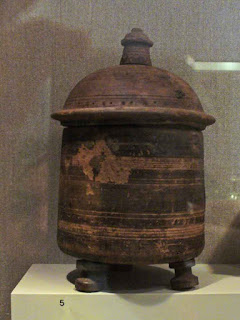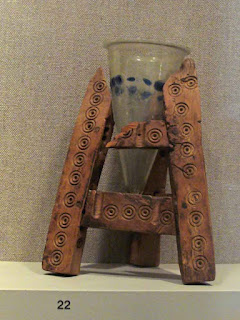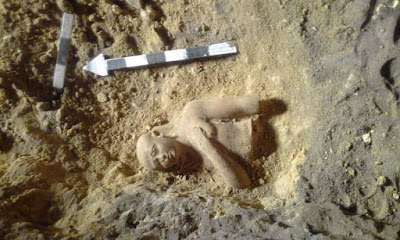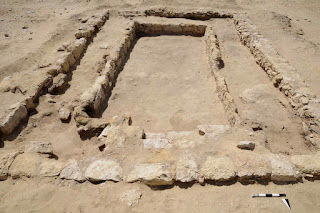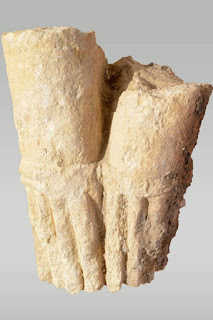the goddess Aphrodite and her companion Eros (also known as Cupid). This beautiful bronze statuette of the goddess comes from Karanis, Egypt (KM 10728)
Ancient flip-flop, with knife blade. ("Knife Blade. Bronze." and "Sandal. Palm Fiber." both from "Roman Period (1st-4th century AD). Karanis, Egypt.")
Bust of Serapis (Furniture Ornament). Wood, clay, gold leaf. Roman Period (late 2nd-early 3rd century AD. Fayum Region, Egypt
Box with Lid. Wood. Roman Period (1st-4th century AD). Karanis, Egypt
Professor Laurel Bestock is one of Sue Alcock's colleagues at Brown University. I mentioned that Sue interviewed her colleagues about each unit's archaeological topic, allowing us to hear about the differences in doing their work in totally different parts of the world. Dr. B. works in Abydos, in Egypt. She told us that almost everything is preserved perfectly in Egypt, with the exception of wood. There are termites in Egypt which almost always get the wood.



